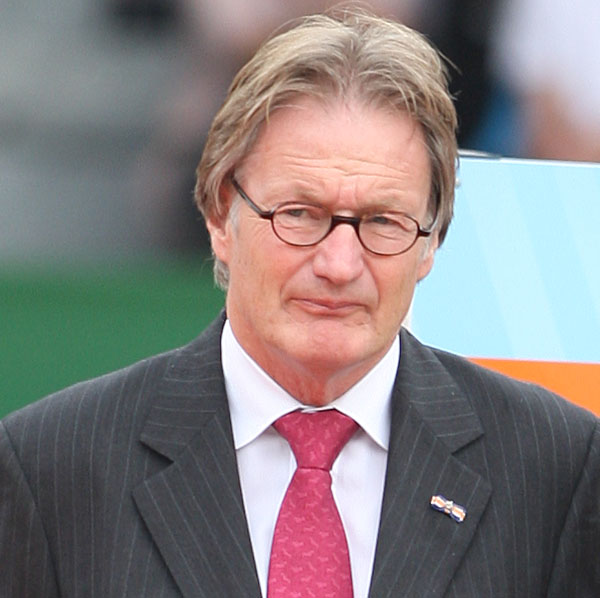Changes in Olympic Individual Qualifying Increases Possibility of More Teams for Rio 2016
11 years ago StraightArrow Comments Off on Changes in Olympic Individual Qualifying Increases Possibility of More Teams for Rio 2016

By KENNETH J. BRADDICK
Major changes in the allocation of individual combinations for the 2016 Olympic Games could lead to an increase in the number of teams at Rio de Janeiro as well as more nations being represented by one or two riders under a last-minute compromise approved Thursday by the International Equestrian Federation’s (FEI) General Assembly.
The change in qualifying for the Rio Games was made in the face of what FEI Dressage Committee chairman Frank Kemperman described as “some bad feelings” over the format that included a reduction to a single team able to directly qualify through the Pan American Games, the largest multisport championships after the Olympics themselves.
The 130-nation General Assembly meeting in Montreux, Switzerland approved the deal to allocate the 60 places for dressage, up from 50 in past Olympics, by assigning 40 combinations for 10 national teams qualifying directly and 20 combinations for individual slots.
The change did not restore qualification of a second team through the Pan Ams in a fight led by Canada.
But it changed the way individual places will be allocated. Team procedures were not altered from previously reported allocation.
The streamlined procedures allocated six individual slots to be filled by combinations from the Olympic Ranking List.
For the other 14 individual places, two were assigned to each of the seven FEI Olympic geographic groups.
Groups A (Northwestern Europe), B (Southwestern Europe) and C (Central & Eastern Europe, Central Asia) will qualify their two individual combinations from the Olympic Ranking List.
Groups D and E making up North America and Central & South America will each have one individual from the Olympic Ranking List and the second individual qualifying through the Pan Ams.
Groups F of Africa & the Middle East and G of Southeast Asia and Oceania will qualify one each individual through the Ranking List and the second individual by a special qualifying event still to be named.
The compromise proposal emerged on the eve of the annual meeting of the General Assembly that has ultimate decision-making authority over the organization that administers international horse sports.
The realignment of individual places equally among the seven FEI Olympic geographic groups replaced an FEI proposal that allocated six places to the three European groups, seven spots, or one each for the seven geographic groups and another seven places from the Olympic ranking list for nations that had not qualified a team without regard to geographic representation. That provision was seen as favoring Europe.
The approved format for individuals could give nations more of an opportunity to qualify the minimum of three horses and riders needed to field a “composite” team.
This raises the chances of at least two teams from the Americas in addition to host Brazil fielding teams in Rio even if failing to win one of three places available at next year’s World Equestrian Games. One nation would qualify through the Pan Am Games in Toronto in 2015 while at least one other country could qualify three individuals to make up a “composite” squad.
Another major change was cutting the number of competitions to four from eight to be used for establishing the FEI Olympic Athletes Ranking List for competitions from Mar. 9, 2015 to Mar. 7, 2016i.
Qualifying procedures for teams was unchanged from the original proposal and approved by the General Assembly.
Ten (10) teams of four combinations making up a total of 40 combinations can directly qualify under the following time line:
* 4 combinations for one team from the host nation of Brazil.
* 12 combinations from the three best ranked teams from the World Equestrian Games in Normandy, France in 2014.
* 12 combinations from the three best ranked teams from the 2015 European Championships from Olympic Groups A (Northwestern Europe), B (Southwestern Europe) and C (Central and Eastern Europe, Central Asia).
* 4 combinations for 1 best ranked team from Olympic Groups D (North America) and C (Central & South America), excluding team qualified at the 2014 WEG.
* 4 combinations for 1 best ranked team – Only if Groups F (Africa & Middle East) and G (Southeast Asia & Oceania) have not yet qualified a team, the 1 best ranked team from Olympic Group F or G at the 2014 WEG is directly qualified. If not allocated, this team slot will be added to the 2014 WEG so that the 4 best ranked teams from the 2014WEG are directly qualified.
* 4 combinations for 1 best ranked teamfrom Olympic Groyp F (Africa & Middle East) or Group G (Southeast Asia & Oceania) or Group C countries of Kazakhstan, Kyrgyzstan, Turkmenistan & Uzbekistan at an FEI approved qualification event, excluding teams qualified above.

The Pan American Equestrian Confederation approved mixed teams of small and big tour combinations for the next championships in Toronto in 2015, reported Frank Kemperman, who was re-elected chairman of the Dressage Committee.
Teams of Prix St. Georges and Grand Prix horses and riders has been developed at the CDIO3* Nations Cup in Wellington, Florida.
The Florida Nations Cup has also been included in the global series of 2014 team competitions created by the FEI in an effort to develop support for dressage.
The initial year of the series was “rather successful,” Frank reported, and a second year as a pilot program already includes six Nations Cups on both sides of the Atlantic compared with four in Europe in 2013.
Frank Kemperman of the Netherlands and who heads up the World Equestrian Festival at Aachen, Germany was elected to a second four-year term as chairman of the six-member Dressage Committee. He was first appointed after leading a task force that completely revamped the committee following the 2008 Olympic Games. The committee is now made up of members representing major stakeholders in the sport.
The period of time for definite entries in FEI-approved dressage competitions was cut to 10 days from 14 days to bring it into line with the definite entry deadline for jumping.
An extraordinary general assembly was set for next April to consider amending the rganization’s statutes so that Princess Haya could seek a third term as president of the FEI.
The decision came after 100 national federations signed a petition requesting assembly as soon as possible to consider amending the statutes.
Representatives from Belgium, Mauritius, Sudan, Chinese Taipei, the United States and Jamaica made speeches calling on the Jordanian princess to reconsider the decision not to seek a third term when her presidency ends in November 2014.
Following the speeches, Princess Haya returned to a standing ovation from delegates.
Cuba was dropped from membership in the FEI for failure to pay its annual dues and attempts to contact a responsible official in the country had been unsuccessful.

